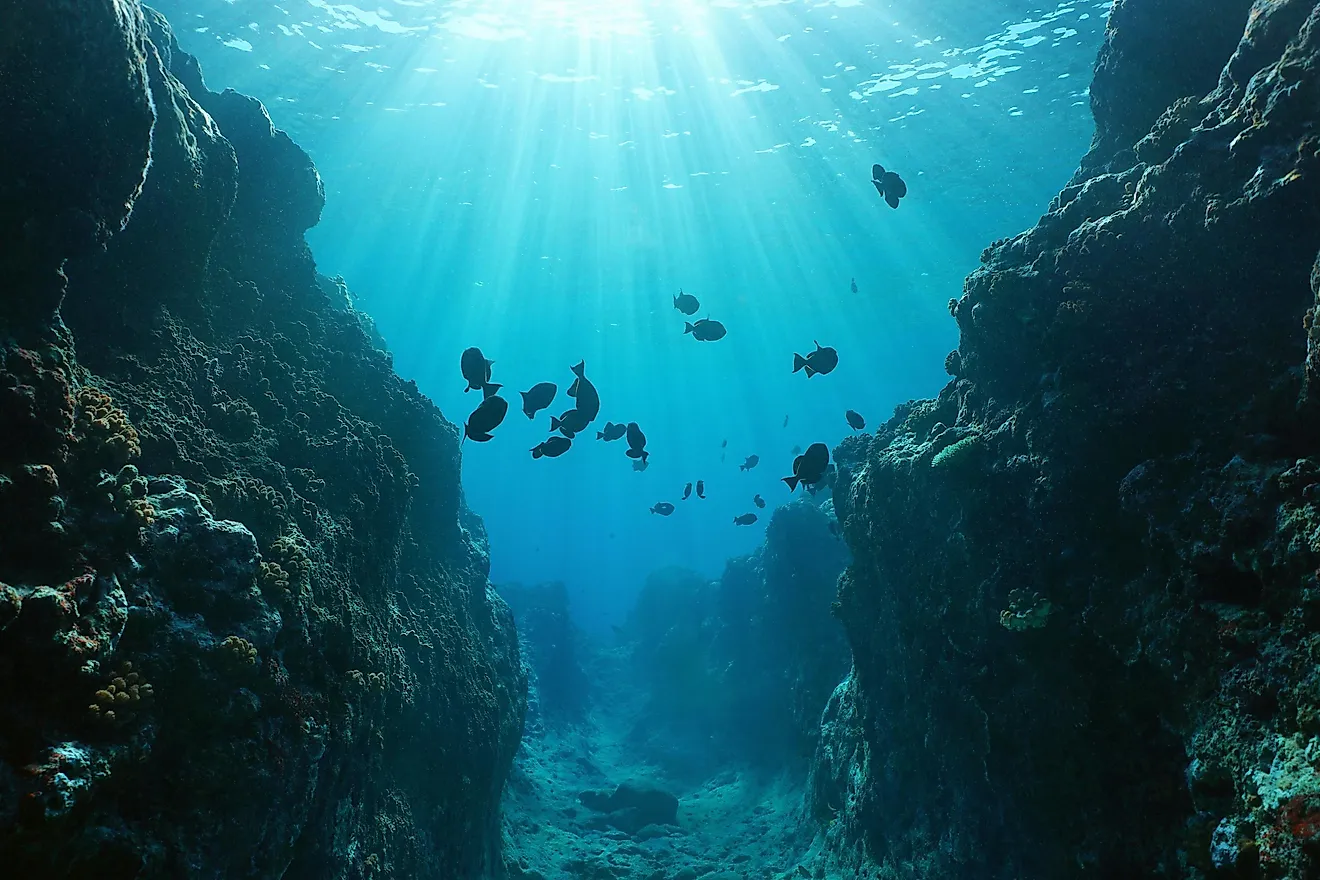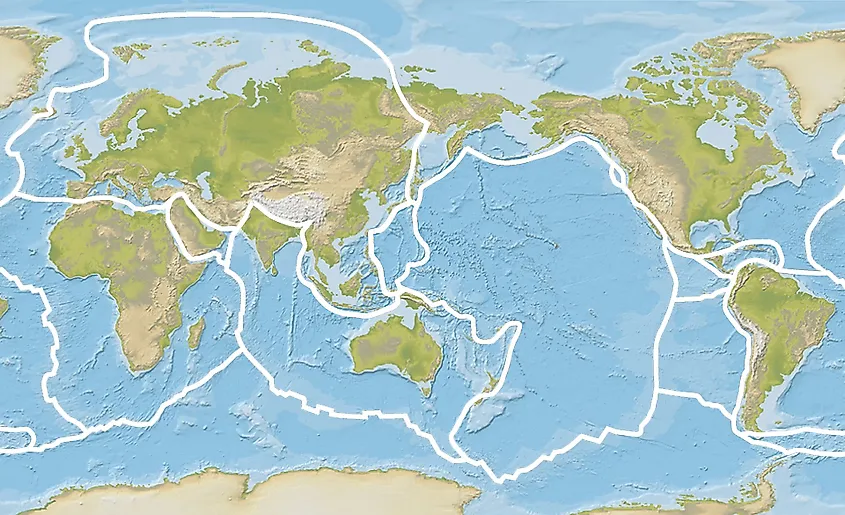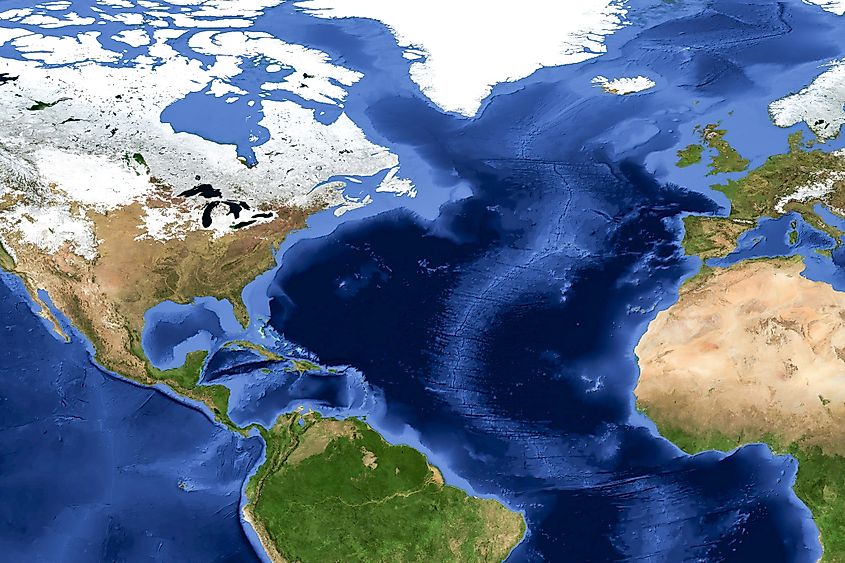What Would Happen if the Pacific Plate Continues to Move
The Pacific Ocean Is Shrinking

- Seafloor spreading is when tectonic plates split from each other, creating a new oceanic crust.
- While the Pacific Ocean is slowly shrinking, the Atlantic Ocean is expanding.
- Some scientists believe that eventually the Pacific Ocean could close completely.
The Pacific Ocean is the world's largest ocean. It is massive, with an estimated area of 63.8 million square miles and an average depth of 13,000 feet. It makes up 28% of the Earth's surface and is home to the world's deepest oceanic trench, the Mariana Trench.
But the Pacific Ocean is slowly shrinking at a rate of 0.5 square kilometers (0.19 square miles) per year due to Plate Tectonics.
What is Plate Tectonics?

Credit: Image by dkfindout.com
Plate Tectonics is a scientific theory that the Earth's outer layer, the lithosphere, is made up of individual pieces called tectonic plates that are in constant motion. These plates were responsible for the fragmentation of the supercontinent Pangea around 200 million years ago.
The two geological processes that help explain the shrinking of the Pacific Ocean are seafloor spreading and subduction.
Seafloor spreading is when tectonic plates split from each other, creating a new oceanic crust. This process gradually pushes tectonic plates apart and occurs at underwater mountain ranges called mid-ocean ridges. A younger crust is less dense than an older crust. Thus, those that have been around longer are heavier and farther away from the mid-ocean ridge.
Subduction happens when two tectonic plates collide, and one is forced below another. A denser plate, such as an oceanic plate, subducts under a less dense plate, like a continental plate, and melts once it enters the magma. The areas where these plates crash are called subduction zones. Subduction usually results in the formation of mountain ranges, volcanoes, and deep-sea trenches. The presence of these natural structures helps identify the location of subduction zones.
While seafloor spreading creates new crust, subduction destroys old ones, helping to create a balance.
Why the Pacific Ocean is shrinking

The Pacific Ocean is home to a circle of subduction zones called the Ring of Fire, a 24,900 mile-long path along the ocean's edge. It is home to about 75% of the world's volcanoes, and 95% of all earthquakes happen there.
The Pacific's mid-ocean ridge, the East Pacific Rise, is a fast-spreading center, which means it spreads about 3 to 6 inches a year, compared to the Mid-Atlantic Ridge, which expands at a rate of 0.8 to 2 inches a year. Due to the presence of subduction zones, the destruction of old crust balances the formation of new seafloor, slowing the growth of the Pacific Ocean. This, coupled with the expansion of the Atlantic Ocean, is why the Pacific Ocean is getting smaller.
The Atlantic is home to the Mid-Atlantic Ridge, a mountain range that extends for about 10,000 miles and is the site of seafloor spreading. Since there are minimal subduction zones in the Atlantic, very few older plates are subducted when spreading occurs. As a result, the Atlantic Basin is expanding at about 0.5 to 4 inches a year. The Eurasian and North American tectonic plates, separated by the Mid-Atlantic Ridge, are currently moving away from each other. The North American plate is shifting to the west-southwest at a rate of about one inch per year.
The future of the Pacific Ocean
As a result of Plate Tectonics, the Earth's continents are always moving. Scientists believe a new supercontinent will form hundreds of millions of years from now, with four fundamental scenarios believed to be responsible for its creation: Novopangea, Pangea Ultima, Aurica, and Amasia. The shape of this new world will depend on how the current movement of the continents. Australia is slowly moving north and could one day collide with Japan, Korea, and eastern China. Africa is rotating counter-clockwise into Europe, and the Atlantic will either stop growing and start closing or continue to expand.
Although scientists have multiple theories as to how the future supercontinent will come to be. The most likely scenario is one where the Atlantic keeps expanding while the Pacific keeps closing. This progression is the most probable one given the current direction in which continental plates are moving.
Source: https://www.worldatlas.com/articles/the-pacific-ocean-is-shrinking.html
0 Response to "What Would Happen if the Pacific Plate Continues to Move"
Post a Comment